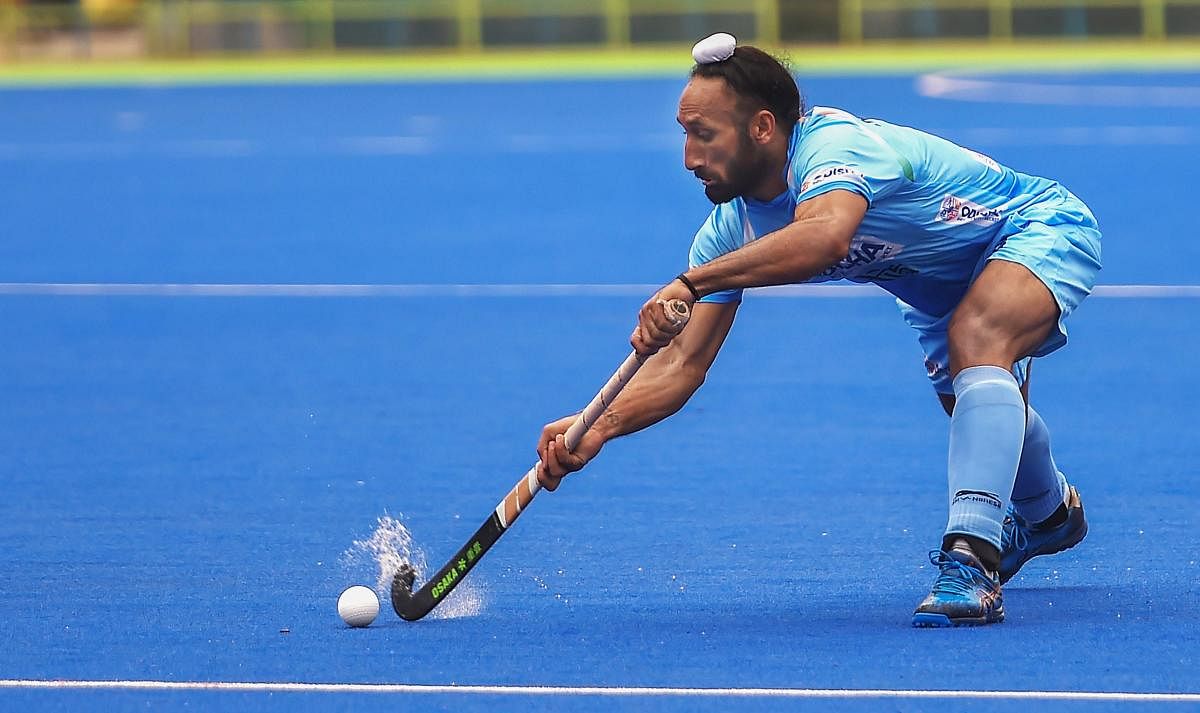
Quite like the beginning and the dozen years that followed, the end of Sardar Singh's journey in international hockey was understated, contrasting with the hype that often marks the culmination of a great career.
What was there, instead, was a simple goodbye and gratitude.
A third Olympic appearance did not materialise but Sardar, nonetheless, walked into the sunset after a stellar 12-year career during which he not only established himself as the face of Indian hockey but also as a global star.
Sardar was eager to continue till the 2020 Tokyo Olympics but destiny had other plans as he called time at 32, after a disappointing Asian Games campaign where India failed to defend its title.
Many feel that Sardar was made a scapegoat for India's disastrous campaign and was forced to retire but by his own admission, the loss to Malaysia in the Asiad semifinal triggered thoughts of retirement.
"I wanted to continue and I feel I had some more years of hockey left in me but I just couldn't digest the loss to Malaysia. I couldn't sleep for days after that loss. That was the trigger," Sardar told PTI.
He played hockey like a king and goes away after a career during which he led India to Asian Games gold in Incheon (2014) besides two bronze medals in 2010 and 2018. He won two Commonwealth Games silver, a historic silver in the Champions Trophy (2018 Breda), two Asia Cup titles and numerous other trophies.
At 32, Sardar left behind a rich legacy, having led the side for eight years from 2008 till handing over the responsibility to P R Sreejesh in 2016. He was a talismanic midfielder who played the game on his own terms with fitness being key to his success.
Sardar was among the fittest players in the squad and registered a score of 21.4 in the Yo-Yo fitness test before the Asian Games. He not only bettered his own record of 21.3 but also surpassed the fitness freak Indian cricket captain Virat Kohli, considered one of the country's fittest athlete.
Throughout his 12-year career, Sardar was held in high esteem by the hockey world, for his midfield control and precision passing.
His stature can be gauged from the fact that at his prime Sardar was included in the FIH All-Star team for consecutive years in 2010 and 2011, a feat very few hockey players of India has achieved.
Sardar was an epitome of hard work and dedication. During his entire career, he usually was the first player to reach the ground for practice sessions and the last one to leave, a fact confirmed by his own teammates.
From the time he hits the turf in training sessions, Sardar puts his head down and goes about his business with dedication.
"Sardar paaji sabse jyaada serious rehte hain training mein. (Sardar's is the most serious in training sessions," young striker Dilpreet Singh had once said.
Sardar was a fighter to the core. Every time he was left out of the squad he roared back into the team, riding on his work ethic and dedication.
With age not on his side, he was left out of India's squad for this year's Gold Coast Commonwealth Games. The fighter that he is, Sardar decided to hit the gym and work on his fitness. The move paid dividend and he made a comeback to the side for the Champions Trophy, where he helped India win a historic silver.
A firm follower of 'Guru-Shishiya' parampara, Sardar never said no to his coaches. Although a centre-half specialist, he would fit in all positions. Barring goalkeeper, there isn't a position on the field Sardar hasn't played in – from the preferred midfield position to defence, wing, upfront or a free man.
In Indian hockey, changes tend to come without warning, but Sardar has been a rare constant since making his senior debut against Pakistan in 2006.
The 32-year-old made over 350 international appearances and was also the youngest player to captain India when he led the team at the 2008 Sultan Azlan Shah Cup.
His achievements on the hockey turf was duly appreciated when he was awarded the Arjuna award in 2012 and Padma Shri in 2015.
But Sardar's career was not devoid of controversy either. He was accused of rape by his Indian-origin British girlfriend in 2017, a charge which he vehemently denied and was given a clean chit by the special investigation team of Ludhiana Police.
That episode, however, had a lasting negative impact on his game, and he called it one the "toughest" phases of his career.
Sardar has been an asset to Indian hockey. In 1992, Didar Singh became the first hockey player from the little village of Sant Nagar in Haryana to represent India at the Olympics and at that time his younger brother, Sardar, was six years old.
Didar created a storm in his hamlet and from there on hockey became a part of life for every kid of the village. But little did Didar know that his younger brother would go on to become one of the famous sons of Indian hockey.